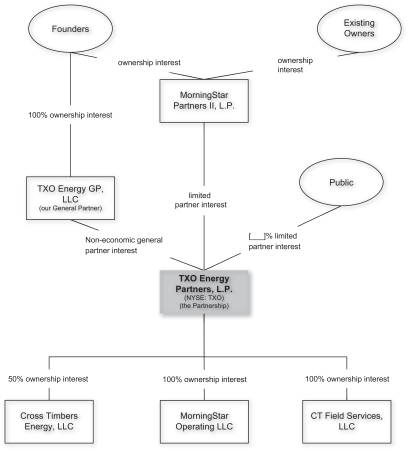of $7.0 million, on NGLs of 95% resulting in an increase in revenue of $4.6 million, and on natural gas of 15% resulting in an increase in revenue of $4.8 million.
Production expenses
Production
expenses increased $10.7 million, or 75%, from $14.3 million for the three months ended March 31, 2021 to $25.0 million for the three months ended March 31, 2022. The increase is primarily attributable to the increased
production associated with the addition of the Vacuum and Andrews Parker properties of $8.6 million as well as increased maintenance and well work costs.
On a per unit basis, production expenses increased from $8.49 per Boe sold for the three months ended March 31, 2021 to $12.05 per Boe
sold for the three months ended March 31, 2022. The increase is primarily related to the increased costs per Boe from the acquired Vacuum and Andrews Parker properties due to the acquired properties having a higher percentage of oil production,
which is more expensive on a Boe basis than natural gas production.
Taxes, transportation, and other
Taxes, transportation, and other increased $10.8 million, or 85%, from $12.7 million for the three months ended March 31, 2021
to $23.5 million for the three months ended March 31, 2022. The increase is primarily attributable to the increased production associated with the addition of the Vacuum and Andrews Parker properties of $6.8 million as well as an
increase in oil, NGLs, and natural gas prices.
On a per unit basis, taxes, transportation, and other increased from $7.54 per Boe sold
for the three months ended March 31, 2021 to $11.31 per Boe sold for the three months ended March 31, 2022. The increase is primarily related to the higher commodity prices and change in production mix.
Depreciation, depletion, and amortization
Depreciation, depletion, and amortization increased $0.5 million, or 6%, from $9.3 million for the three months ended March 31,
2021 to $9.8 million for the three months ended March 31, 2022. The increase is primarily attributable to the increased production associated with the addition of the Vacuum and Andrews Parker properties in the fourth quarter of 2021 of
$3.0 million partially offset by a reduction of $2.5 million from our other assets as a result of a lower average DD&A rate partially offset by higher production.
On a per unit basis, depreciation, depletion, and amortization decreased from $5.48 per Boe sold for the three months ended March 31,
2021 to $4.71 per Boe sold for the three months ended March 31, 2022. The decrease is primarily related to changes in reserves.
General and
administrative
General and administrative (“G&A”) expenses increased $0.5 million, or 545%, from ($0.1)
million for the three months ended March 31, 2021 to $0.4 million for the three months ended March 31, 2022. The increase is primarily attributable to the increased costs related to the acquired Vacuum and Andrews Parker properties of
$2.9 million partially offset by a reduction of $2.3 million from employee headcount reductions.
On a per unit basis, G&A
expense increased from ($0.05) per Boe sold for the three months ended March 31, 2021 to $0.19 per Boe sold for the three months ended March 31, 2022. The increase is primarily related to decreased cost recovery and partially offset by
decreased costs and increased production.
117

